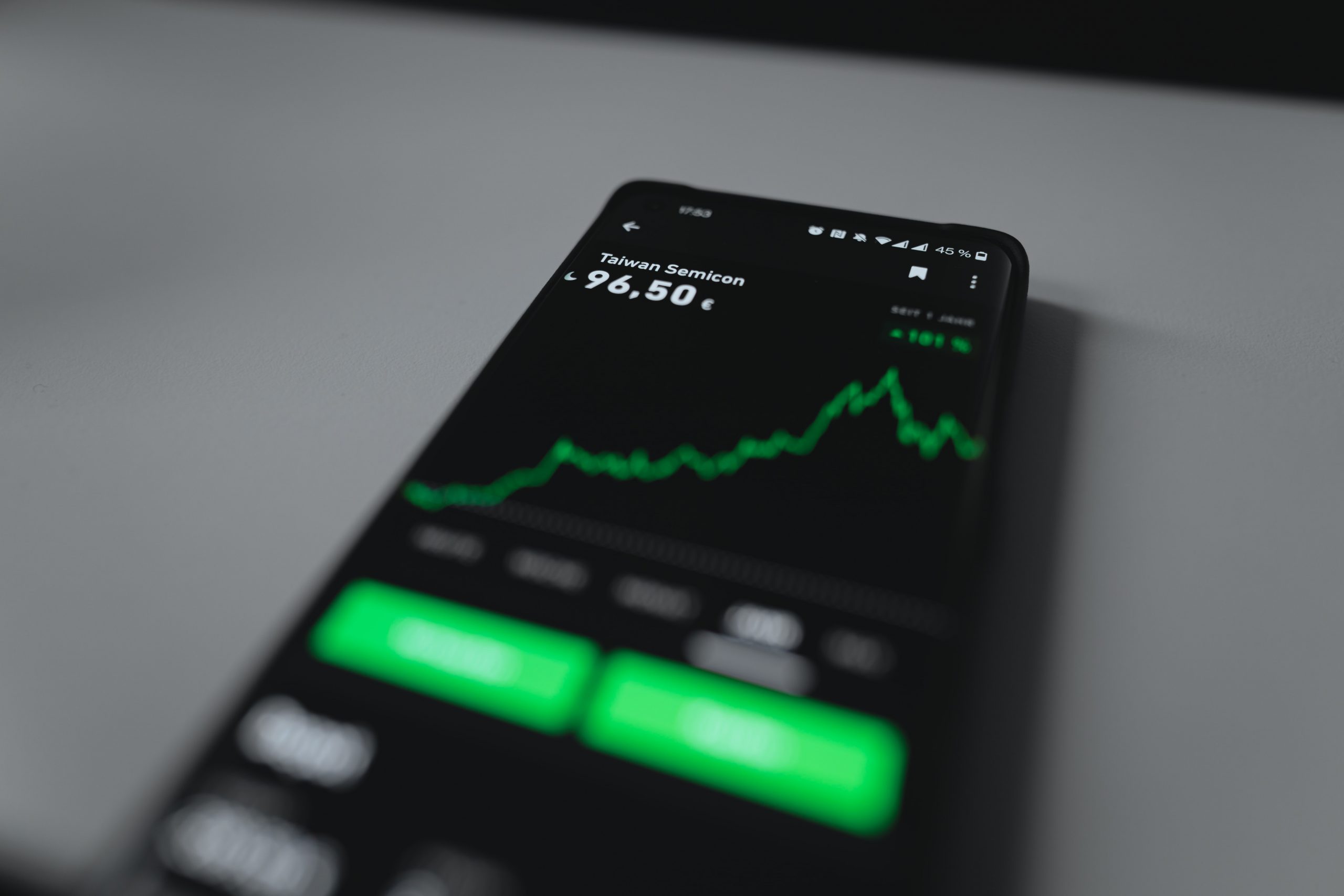It goes without saying that the stock market is a complex system that is affected by many factors. Strike prices move up or down depending on the actions of government regulators, political players, individual companies, institutional investors, hobbyists, and more. Each party is making their own decisions based on the knowledge and philosophies they possess, all of which work together to formulate the stock market movements that we experience day in and day out.
But – what exactly affects stock price? What moves stock prices up and down? In this in-depth article, you’ll learn exactly what drives stock price.
At the end of the day, what affects stock prices depends on a number of factors, which we will describe in more detail below. Thus, we can take a look at the fundamental principles, the technical factors, and other related forces at play in order to understand what determines a stock price. Knowing this information can help you predict future price movements as you see the factors at play around you.
So what affects the value of a stock, and what makes stock prices go up and down? In this guide, we’ll cover all of these major questions and more, so continue reading as we walk you through some of the driving factors of value in the equities market.
What Affects Stock Price at the Broadest Level?
If we take a high-level view of what affects stock price, there are two primary factors behind what causes stocks to go up and down: fundamental and technical factors. Each plays its own role in what affects the price of a stock. And, both are important for investors to monitor so they can time the markets correctly and find attractive investment opportunities.
It’s important to remember that determining what the price of a stock will do based on these factors isn’t easy–as price movements can sometimes be erratic and unexpected. Even still, understanding these factors better can give you a clearer picture of what forces are at play in the market, and what indicators you can look out for. And, the good news is you don’t have to keep track of all these factors on your own. Stock forecasting software – like VectorVest – monitor all this so you don’t have to.
Thus, with the right tools and information at your fingertips, you’ll have the upper hand while investing. Now, before we start discussing exactly what drives stock prices we want to break down the difference between fundamental and technical factors.
Fundamental Factors vs Technical Factors
Both fundamental and technical factors are what drives stock price. But what is the major difference between these two? Here’s what you need to know…
- Fundamental factors: impact stock prices based on company performance, like earnings and profitability
- Technical factors: refer to a stock’s price history, including chart patterns, momentum, and investor sentiment
Put simply, fundamental factors are the aspects that are internal to a company. Meanwhile, technical factors refer to the external factors and the demand for a company’s stock.
With full market efficiency, stock value would only be driven by fundamental factors that are true to the intrinsic value of the shares and the company. But in reality, the stock market relies heavily on technical factors as well. So, it’s important for investors to consider both fundamental and technical factors when determining what will drive stock prices up and down.
What Affects the Price of a Stock: 4 Major Factors Explained
Ready to learn exactly what drives stock prices? We are going to take a look at some of the main factors behind price movements. In doing so, you’ll gain an understanding of what makes stock prices go up and down, and how you can watch these indicators for a good read on the markets.
Keep in mind that some of these factors will move the market as a whole up or down, while others may have an impact on the individual stock of one company.
Earnings (such as EPS)
The quarterly earnings reports of public companies play a major role in what affects the value of a stock–especially when compared to investor expectations. EPS is a fundamental factor, so its performance is highly scrutinized by analysts and investors. We wrote a complete guide on what EPS is in the stock market if you want to learn more. But, here’s the significance of earnings summarized…
If a company’s earnings fall below what the consensus expected or they provide a pessimistic outlook for the next quarter, investors may sell off the stock and cause the price to drop. On the other hand, if earnings exceed investor expectations and the company provides optimistic guidance for the coming period, they may buy more shares and drive the price up.
This is based on the fact that investors are willing to pay more for a company’s shares if they believe they can provide good earnings growth, and don’t see the worth in holding shares of a company that can’t meet their expectations. Learn more in our detailed article on what EPS is in the stock market.
Valuation (such as P/E ratio)
Another fundamental factor, a company’s valuation often impacts how a stock’s price behaves. A valuation multiple, like the P/E ratio, signifies the discounted present value of the company’s future earnings.
So because investors are entitled to a portion of future profits when buying shares in a company, the EPS signifies their ROI. The P/E ratio, then, is the price at which you’re willing to purchase future profit.
Changes to earnings or earnings expectations can either increase or decrease the earnings multiple, making the stocks appear over or under-valued for the new earnings potential. Investors will then either buy or sell the stock based on this adjustment, which causes the stock price to move higher or lower accordingly.
Inflation
Inflation is another crucial element when it comes to what affects the price of a stock, which can easily be monitored through CPI levels. There’s no doubt that inflation has an impact on the stock market, so investors can track inflation levels and strategize ways to hedge against its effects to remain profitable.
In a bullish market when stock prices are rising, interest rates and inflation are both down. Conversely, when the markets turn bearish and short-term interest rates are raised by the Federal Reserve in order to curb rising inflation, borrowing costs become more expensive. So, businesses cut down on operating expenses in order to maintain profitability and in turn, this can cause a miss to earnings expectations, a stock sell-off, and a fall in the price.
So with this in mind, you can see how inflation is an important factor behind what drives stock prices.
News & Market Sentiment
It may not be a simple task to measure the impact that news and market sentiment play on the stock market, though they are both crucial points to keep in mind when discussing what drives stock prices.
Thus, emerging news stories about the overall markets, macro trends, company-level stories, and more can impact the overall sentiment around the stock market or an individual company, and drive price movements accordingly.
For example, imagine a company that’s faced some massive competition recently announcing a significant acquisition that will give them the upper hand in their industry. A news item like this can turn up investor confidence in the company and its future earnings potential, which could lead to increased stock purchases and rising stock prices.
So even though there has been no evidence of improved performance yet, investor sentiment and the news story were able to drive the price up.
What Else Affects Stock Price? Additional Considerations
The above four factors are largely the cause of what drives stock prices, though there are additional factors worth noting as well. So here are some other elements of what causes stocks to go up and down:
Trends
Momentum and other short-term trends occur frequently in the stock market and can move a stock’s price up or down in the meantime. It can be quite challenging to predict which stocks will benefit from such short-term trends or how long they’ll last, but catching one of these price swings early can be very beneficial for investors.
Liquidity
Current liquidity levels in the market can also play a role in what determines a stock price. This often signifies how much investor interest there is for a given stock, and thus how responsive the share price may be to emerging news items.
Oftentimes you can analyze trading volume as a sign of how much liquidity there is. Normally, large-cap stocks will have high levels of liquidity while small-cap stocks may lack liquidity.
Demographics
Another important factor to consider about what affects stock price is the demographics of traders and the makeup of the overall investment population.
For example, much of the dynamic around demographics in the markets involves middle-aged people who are investing at their peak earning stages, and the older population who are closing positions to fund their retirement.
There is a common view that the higher the percentage of investors that are middle-aged, the demand for stocks becomes greater, and valuations and prices rise accordingly.
Substitutes
There are many investment securities that people can use to grow their portfolios, including corporate bonds, government bonds, commodities, real estate, and more. Therefore, the equities market has to compete for investors’ dollars. So when other markets begin to seem more or less attractive, it can have an impact on the demand for stocks, and thus, share prices.
Incidental Transactions
What causes stocks to go up and down can also depend on incidental transactions, which are trades that are made based on factors outside of the stock’s intrinsic value.
For example, insider transactions by executives, shorting stocks, and other hedging strategies are all examples of incidental transactions where the investors are not necessarily optimistic or pessimistic about a certain company, but the trades are executed in order to further the overall strategy of the portfolio. Even still, trades of this nature can still impact the price of stocks.
Economic Strength of Market and Competitors
On a macro scale, the overall economic strength of the market is another aspect of what affects the value of a stock. In general, individual stocks will follow closely with the trends of the overall market, their industry, and their competitors.
For example, a recession will impact the stock market by bringing about a bearish sentiment among investors, a falling value of the major indices, and a lower price for individual stocks.
Some experts have even postulated that the majority of a stock’s price movements is determined by trends and developments in the overall sector and market rather than company-level factors.
How to Gain Insights into Price Movement of any Given Stock
With all the above factors in mind, it’s clear to see that stock prices fluctuate constantly. And as an investor, you want to get in and out of your positions at the perfect time in order to execute profitable trades and keep your portfolio in the green. However, on your own, timing the market in this manner is next to impossible.
Therefore, you need the help of quality stock forecasting software like VectorVest. Our state-of-the-art platform gives you a clear view of what the true value of a stock is, whether you should buy, sell, or hold it at the current market price, and why. You’ll even be able to uncover winning opportunities on autopilot through our pre-built scanners and searches.
With clear and decisive recommendations on when to buy, sell, and hold securities, you have the upper hand in the market with key information that you can’t access anywhere else. Plus, we have accurate and up-to-date reads on the current market sentiment, which can help you prepare for volatility and upcoming price swings that you can either hedge against or take advantage of in your own portfolio.
At the end of the day, there’s always an opportunity to make money in the markets, you just need the right information and tools at your fingertips to do so. So try out our stock software today – you can even receive a stock analysis for free for insights into how it works.
Final Thoughts on What Drives Stock Price
If you’ve ever been curious about what makes stock prices go up and down, now you know. The fundamental and technical factors described here can give you some insight into what the market sentiment is and why the markets are behaving the way that they do. For more information on how the stock market works, take a look at our complete guide.
Given the number of factors that go into what determines the value of a stock, it would be impossible for you to track them all on your own to make informed investment decisions. So, you need a powerful tool like VectorVest that can provide you with clear recommendations, valuable insights, and up-to-date information that can help you make money no matter the market conditions. Start investing smarter – follow our system and win more trades with less effort and time. You’ll never go back to the old way!








Leave A Comment